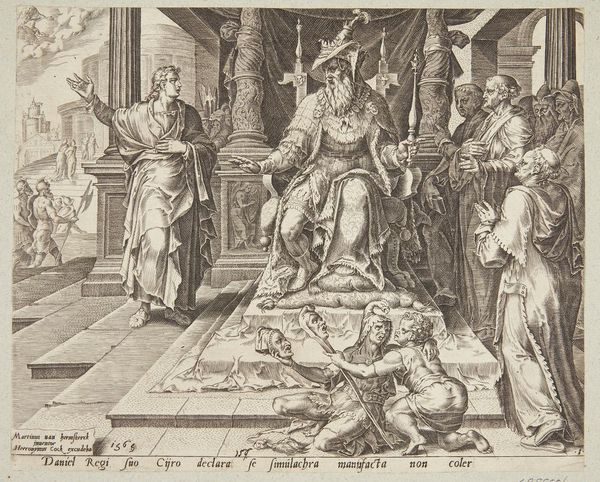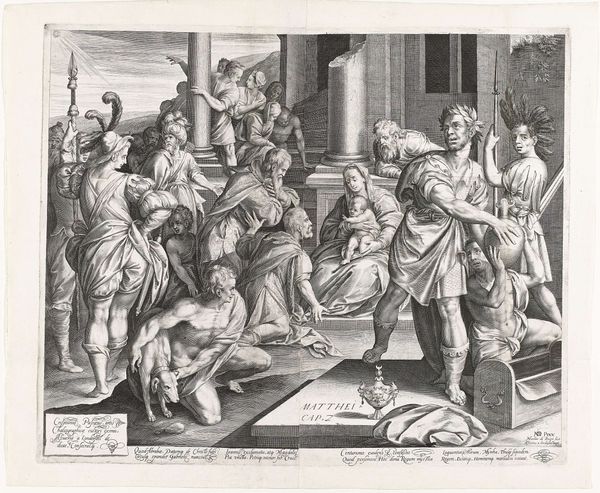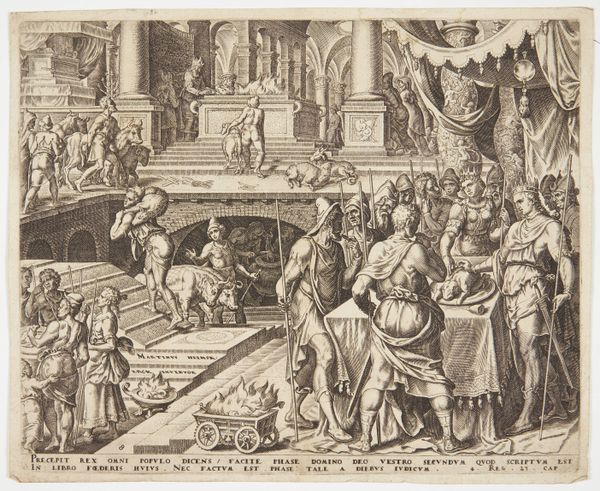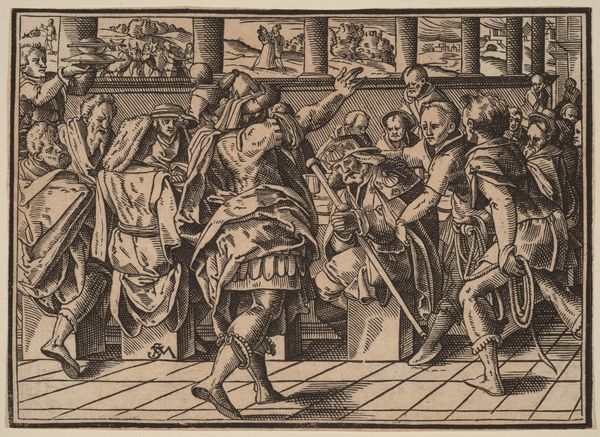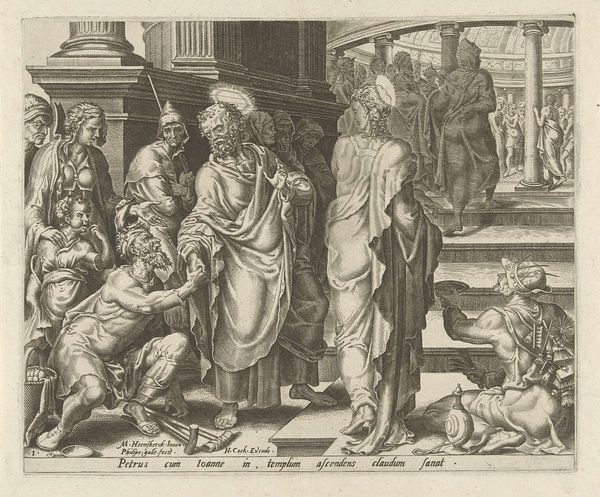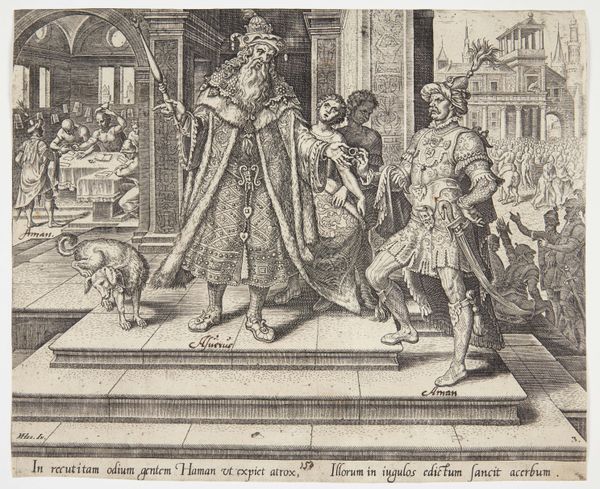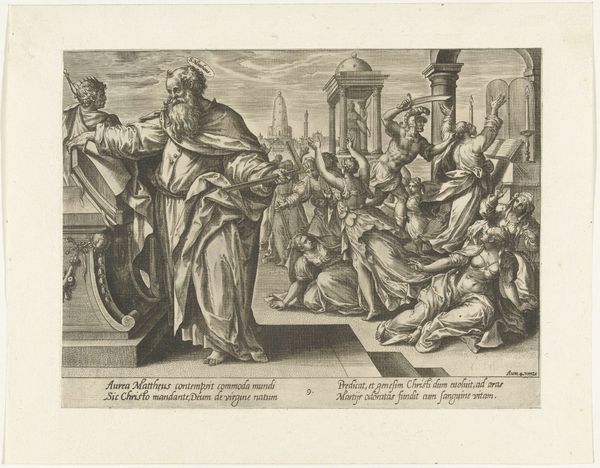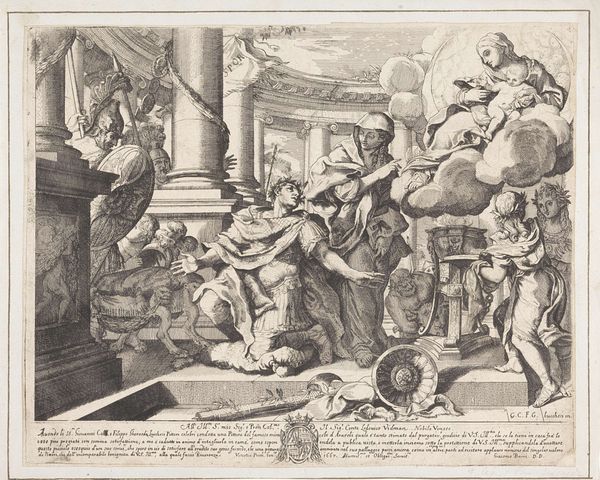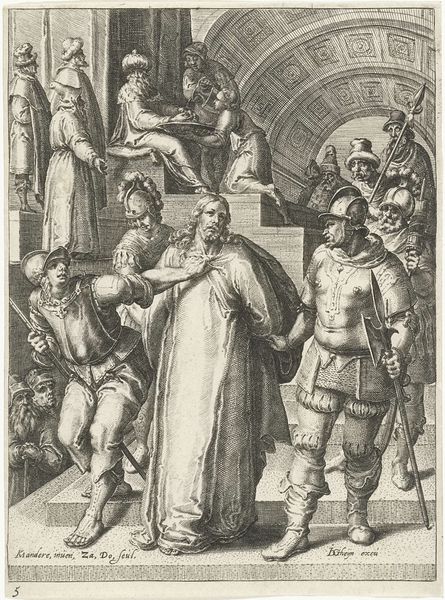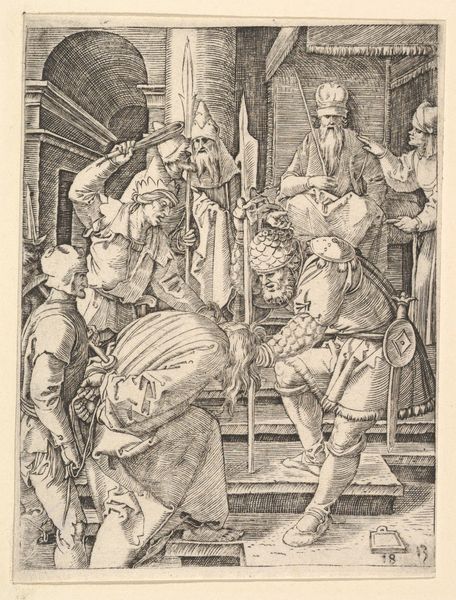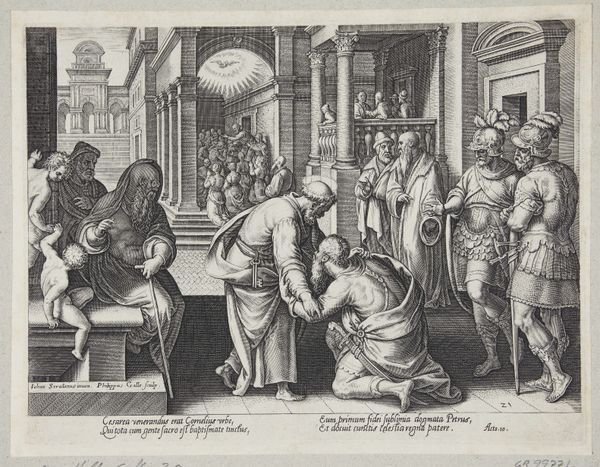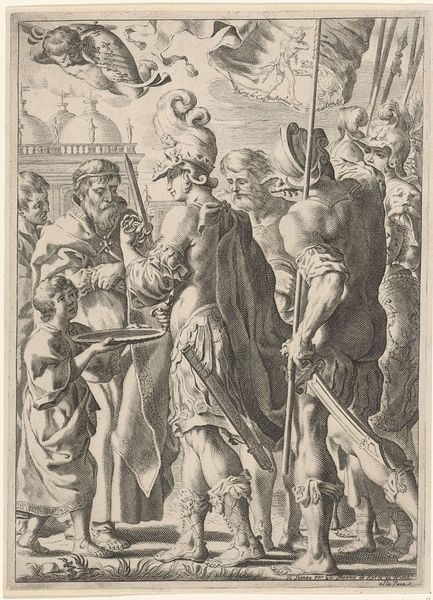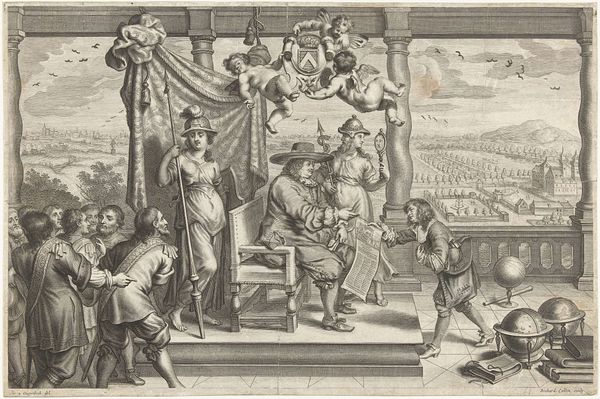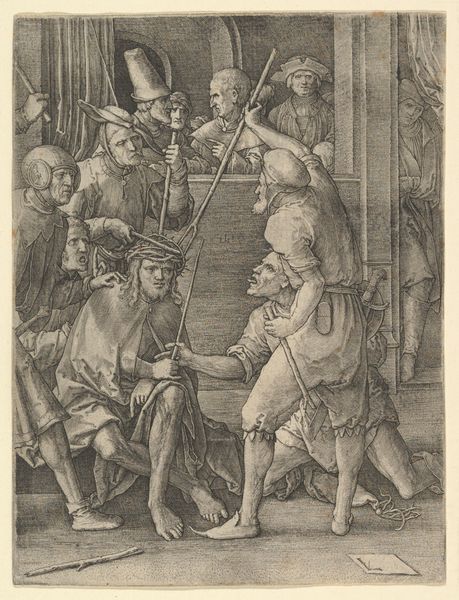
Bestraffing van de man zonder bruiloftskleding Possibly 1558 - 1633
0:00
0:00
dirckvolckertszcoornhert
Rijksmuseum
print, etching, engraving
#
narrative-art
# print
#
etching
#
figuration
#
line
#
history-painting
#
northern-renaissance
#
engraving
Dimensions: height 212 mm, width 252 mm
Copyright: Rijks Museum: Open Domain
Editor: This is "Bestraffing van de man zonder bruiloftskleding" by Dirck Volckertsz Coornhert, made sometime between 1558 and 1633. It's an etching, currently held here at the Rijksmuseum. I’m immediately struck by the dramatic contrast between the richly adorned king and the disheveled man being punished. What kind of symbolism are we looking at here? Curator: Ah, an excellent question! Look closely at the imagery: a banquet above, figures tumbling to hellfire to the right, and the stark central figures. Consider this image as a narrative encapsulating moral consequence, steeped in biblical allegory. What emotions does this visual language evoke within you? Editor: A sense of injustice, perhaps? The king seems so powerful, and the condemned man, relatively vulnerable. There's almost a staged theatricality to the whole scene. Is that typical of the Northern Renaissance? Curator: Theatricality serves a pedagogical function. The symbols are meant to be read and understood, reminding viewers of societal norms and potential transgressions. What meaning might we glean from the “bruiloftskleding” – the absent wedding garments? Editor: Well, if it is related to some societal norms, maybe it has something to do with a sort of… decorum? Showing the man being careless about it and then ending up being expelled from the feast. Curator: Precisely! Think of “bruiloftskleding” not just as clothing, but as symbolic readiness, spiritual preparedness. Its absence speaks to a deeper lack, perhaps a disregard for divine or social contract. It reflects an unprepared spirit facing judgement. Can you see echoes of similar symbolism in contemporary visual culture? Editor: Hmm, I see now. The wedding garment isn't literally about clothing but a metaphor for being ready, a sort of personal virtue maybe? Thinking about it now, I learned something new. It adds a rich layer to understanding the piece. Curator: Indeed. By unraveling these threads of visual and symbolic language, we not only appreciate the artwork on display, we better understand our shared cultural memory.
Comments
No comments
Be the first to comment and join the conversation on the ultimate creative platform.
